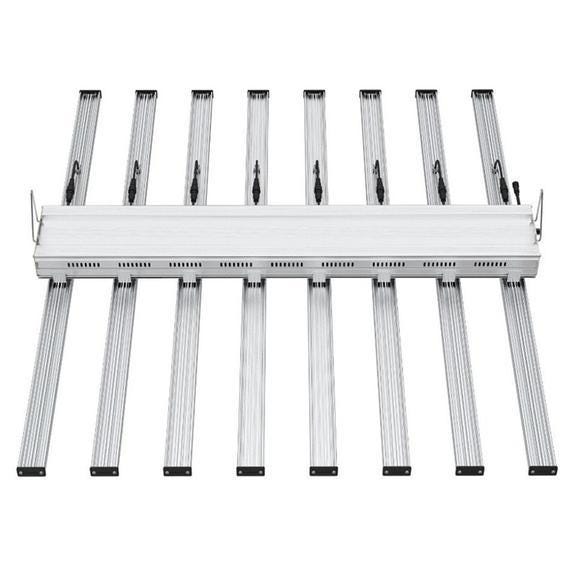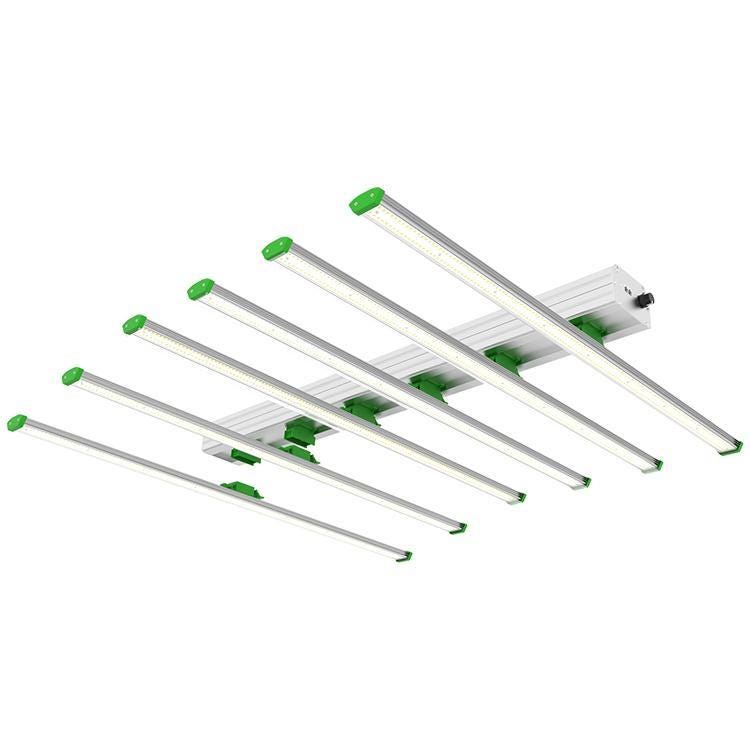- Home
-
SHOP ECO FARM
- ECO Farm Grow Lights
- ECO Farm LED Grow Lights
- ECO Farm Quantum Board
- ECO Farm Samsung LED Grow Lights
- ECO Farm COB Grow Lights
- ECO Farm Commercial Lights
- ECO Farm Supplemental Grow Light
- ECO Farm Fluorescent grow lights
- ECO Farm HPS & MH Grow Lights
- ECO Farm CMH Grow Lights
- ECO Farm HID/CMH Bulbs & Ballasts
- ECO Farm Grow Tents & Kits
- ECO Farm 2x2ft Grow Kits
- ECO Farm 3x3ft Grow Kits
- ECO Farm 3.3x3.3ft Grow Kits
- ECO Farm 4x4ft Grow Kits
- ECO Farm 5x5ft Grow Kits
- ECO Farm Grow Tent - Standard Style
- ECO Farm Grow Tent - Extension & Roof & Lodge Style
- ECO Farm Extraction & Harvest
- ECO Farm Rosin Press Machine
- ECO Farm Dry & Wet Trimmers
- ECO Farm Oil Accessories
- ECO Farm Medicinal Plants Grinder
- ECO Farm Medicinal Plants Containers
- ECO Farm Medicinal Plants Dryer
- ECO Farm Refrigeration Dryer
- ECO Farm Climate Control & Other Accessories
- ECO Farm Inline Duct Fans
- ECO Farm Oscillating Fans
- ECO Farm Exhaust Fans
- ECO Farm Air Filter
- ECO Farm Duct Muffler
- ECO Farm Ventilation Kits
- ECO Farm Plant Humidifiers
- ECO Farm Plant Dehumidifiers
- ECO Farm Hydroponic Accessories
- ECO Farm Other Accessories
- ECO Farm Hydroponics Microscopes
-
TOP BRANDS
- Grow Lights Brands
- Adjust-A-Wing
- Apollo Horticulture
- Bestva
- Black Dog LED
- California Lightworks
- ChilLED Grow Light
- Eco Farm
- HLG - Horticulture Lighting Group
- Kingled
- Kind LED
- Mars Hydro
- Morsen
- Neilo
- NextLight
- Phlizon
- PlatinumLed
- Roleadro
- Optic LED Grow Lights
- ViparSpectra
- Vivosun
- EYE Hortilux
- IPOWER
- NanoLux
- Phantom grow light
- Gavita grow lights
- Grower's Choice
- Lumatek
- Maxibright
- Yearld Pro
- ThinkGrow
- Crecer Lighting
- Green Sunshine Electric Sky
- fohse aries
- loriflux
- luxx
- fluence
- iluminar
- Lex
- LTC
- Rayonled
- FGI
- PHOTONTEK
- Grow Tents & Kits Brands
- Apollo Horticulture
- Black Box
- CoolGrows
- Eco Farm
- GrowLab
- Gorilla Grow Tents
- Mars Hydro
- Quictent
- Secret Jardin
- Unit Farm
- TopoGrow
- VIVOSUN
- Topolite
-
COMPANY INFO
-
COOPERATE WITH US
- Blog
Mammoth Lighting Commercial Series 8 Bar 640 Watt LED Grow Light VS GROPLANNER LED GROW LIGHT 640W- GROPLANNER I SERIES
July 07, 2021
Choosing the type of grow lights you use for your ACMPR grow op is a major decision. We can’t tell you which one to use, but we can tell you that LEDs have been steadily gaining popularity over the past decade or so (even though they’ve been around since the 60s).
So why have they become so popular? First off, LED grow lights are a lot more affordable than they were in the past. But more importantly, these are the most energy-efficient bulbs on the market. And on top of that, LEDs give off the full-color spectrum of light, which your plants will thank you for.
Comparing LEDs to Other Bulb Types
Even if you’ve got high energy efficiency on your grow room agenda, LEDs aren’t the optimal choice for everyone. Sure, LED grow lights yield well and they conserve power, but before deciding that LEDs are for you, it’s important to also consider other bulb types.
When you compare HPS vs LED grow lights, HPS bulbs tend to produce more intense light per watt (this is why it’s considered a high-intensity bulb). The downside is that they also use a lot of energy and produce a high heat output.
But, when used properly, HPS (short for high-pressure sodium) bulbs often produce a higher yield than high-intensity led grow lights. You just need to be aware that there’s a greater risk of overheating with HPS (and CMH) bulbs.
The other common comparison is between CFL vs LED grow lights. CFL (short for compact fluorescent lamps) is a great choice for the early stages of the grow op, but they can’t handle flowering the same way that LEDs can.
How close should LED grow lights be to plants?
The placement of your grow lights depends entirely on the type of bulb, so even if you know all about HPS or MH placement, the rules for LEDs are completely different. So when learning how to use LED grow lights, pay close attention to the number of inches from the plant canopy.
When comparing HID vs LED grow lights, LEDs have a much lower heat output than high-intensity bulbs. This means that they can be placed closer to the plant canopy without risking plant scorch or overheating.
And remember, the higher the wattage, the higher you should hang your lights. When using the best LED grow lights for indoor plants, follow these basic tips for placement:
240–400W LEDs: 16–24”
450–550W LEDs: 20–30”
600–850W LEDs: 24–26”
900W+ LEDs: 26–42”
Mammoth Lighting Commercial Series 8 Bar 640 Watt LED Grow Light

Features:
Mammoth Lighting’s Commercial Series 8 Bar 640 Watt LED Grow Light was developed by expert indoor growers over years of careful experimentation and testing. Mammoth LED grow lights are manufactured using the highest quality Samsung diodes. These powerful lights deliver a continuous range of wavelengths from blue and green to red, creating a light blend matching the natural sunlight.
This is accomplished by using more light bars, more diodes, and an overall larger physical footprint — spanning 47" x 42" — compared to any other LED manufacturer. With 1720 umol/s of PPF and a PAR rating of 2.7 umol/J, the Mammoth Lighting 8 Bar fixture is an efficient, intense, grow light powerhouse. Mammoth customizes their light spectrum to optimize plant growth and increase yields while consuming less energy and reducing operating costs compared with traditional grow light technologies.
PPF: 1720 µmol/s
Power: 8 bar 640W,
Voltage: AC100–277V 50–60Hz
LEDs: SAMSUNG LM301B
Spectrum: 3500K + 660nm
LED lifespan: 50000 Hours
Dimension: 47" x 42" x 4"
Veg Footprint: 6' x 6'
Flower Footprint: 4.5' x 4.5'
Power: 640 watts
Light Output: 1720 µmol/s
HID/HPS Equivalent: 1000 watt
Dimensions: 47" x 42" x 4"
Manufacturer’s Warranty: 5 years
GROPLANNER LED GROW LIGHT 640W- GROPLANNER I SERIES

Features:
This GROPLANNER LED grow light has a balanced lighting design, which is enough to cope with complex indoor use environments. The actual power is 640W, and it provides PPF output (1750μmol/s), allowing you to obtain a higher output of 30% to help you achieve maximum quality and Quantity, better than the traditional growth system. It is very suitable for 5'x5' plant coverage and 6'x6' reduced coverage, which greatly improves the light coverage. The advanced design effectively expands the light area. At the same time, the lighting is more uniform. With a high energy efficiency of 2.75 umoll/J, it also provides a high-quality and complete natural spectrum from 400nm to 700nm. There is no need to worry about heat dissipation even with high power. The aluminum cooling plate using advanced small molecule materials, plus the heat sink of each chip, achieves an excellent heat dissipation effect. All these designs make the heat dissipation efficiency high. No fan, no noise.
Power consumption:640W
Light Color:Full Spectrum
PPF: 1750μmol/s
Efficacy:2.75 μmol/J
Dimming:0–10V
Heat:120°F
Lifetime : >60,000 hrs
Input Voltage:120–277VAC,50/60Hz
Thermal Management:Passive-Cooled Design
Coverage:5'*5' for Flw, 6'*6' for Veg
WHY CHOOSE A FULL SPECTRUM LED GROW LIGHT?
If you have done some research online, you may be wondering why everyone seems to be touting full-spectrum LED grow lights. There’s some science behind this, but we’re here to break it down so that it’s easier for you to understand some of the reasons why full-spectrum LED grow lights are considered the best LED grow lights.
Ever wondered why many farmers still prefer to plant outdoors where possible? This despite land scarcity, exposure to the elements, etc.? Well, it turns out that sunlight plays a huge part in this. Sunlight offers the whole spectrum of visible light which is important because many plants require different colors of the light spectrum during different growth stages.
If you only use a certain type of LED grow the plant, it’s likely that your plants will not have the appropriate color spectrum for one of the growth stages. Blue LED lights, for instance, maybe great when it comes to encouraging vegetative growth, think plants that grow tall and leafy, but they aren’t so useful if you are at a stage where you want your plant to bud and flower.
In fact, this is where blue LED lights alone may result in not-so-ideal situations where your plants turn out to be busy with minimal buds that can eventually flower. Red LED lights, on the other hand, are really beneficial for the budding and flowering of plants, but this alone is also not sufficient if you want your plants to eventually grow tall and healthy.
That said, you may think that it will be fine for you to just get red and blue LED lights. Well, that’s not the end of the story. While there are different views on the value of ultraviolet light, there has been some research that suggests that the use of ultraviolet light in short bursts can help to boost THC production, i.e. increase the potency of the growing cannabis.
As for white LED light, it isn’t particularly helpful to the growth of the plants, but in an indirect way, it helps you, the grower, better see and resolve any potential problems in your grow room. These aside, research also suggests that plants are used to growing with the full spectrum range that’s available from sunlight, which is probably why the isolated use of blue and red LED grow lights may still not be an ideal way about it.
Since full-spectrum LED grow lights mimic real sunlight, it is probably best to use them in your grow room to achieve the best possible outcome. This is also why all of our recommended LED grow lights below are full-spectrum LED grow lights or at least LED grow lights that come with some combinations of the different spectrums that are essential for particular crops they are designed for.
Conclusion
LED grow lights are capable of producing beefy plants and high yields, all while maximizing energy efficiency. After figuring out your ideal wattage based on grow room coverage area, start using one of these LED light systems and let us know how it goes!
Leave a comment
Also in News

What are the best LED grow lights to use in a grow tent?
June 27, 2024
When choosing Best LED Grow Lights, you should also consider the durability of the lamp, energy efficiency and whether it can meet the light needs of specific plants. For example, the LED plant growth lights provided by Philips Lighting are designed for specific crops to promote uniform growth and improve quality and yield.

Can I use normal led lights to grow plants indoors?
June 20, 2024

What's the best indoor LED growing light on Amazon USA?
June 15, 2024
On Amazon, hot growth light types include LED Growing Lights, which have a variety of functions and features such as automatic on/off timing, red and blue LED light combinations, multiple dimmable modes, and flexibility for indoor potted plants or indoor gardens.
